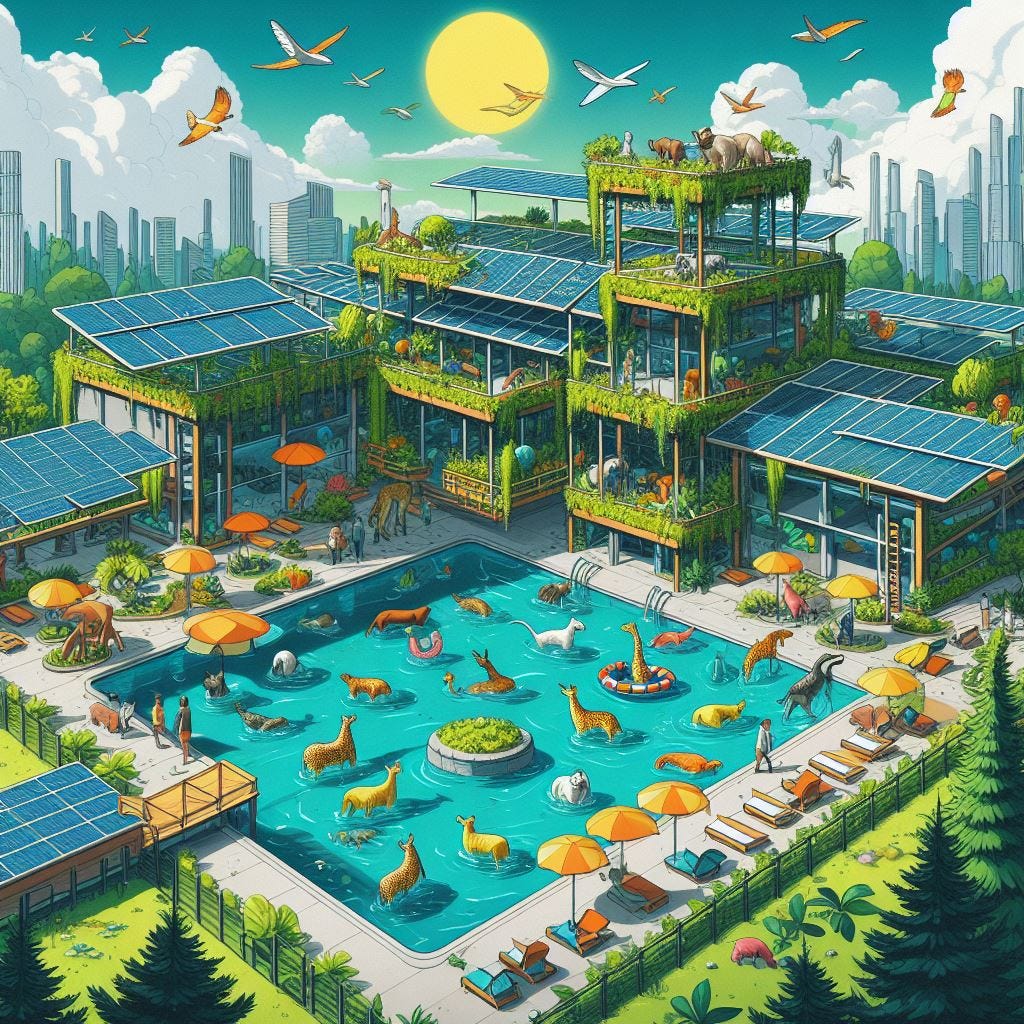The Great Genetic Rescue
Children stormed into the auditorium as Dr. Katherine Ogoye watched from behind the curtains. The meerkats began chattering more than usual. They too could sense the energy in the room.
She stepped out onto the stage. The laughter from the children began to die down, replaced by a quiet excitement as they took their seat.
“Welcome eco-explorers!” the doctor boomed. The lozenges she took earlier helped make her voice warm and welcoming.
“Today we’re not just visiting amazing animals, but we will look into the exciting world of gene editing, where science helps animals thrive!”
Her assistant pushed the meerkat enclosure onto the stage. Children let out yips of joy and the animals looked equally jittery.
“These curious critters are part of our social species resilience program. Meerkat populations were declining as climate change led to habitat and food loss. Do you recall hearing about that?”
There were some murmurs of “less rain” and “less plants” through the crowd.
“Exactly!,” she smiled. “But with a tiny tweak to their genes, their pups were born with a stronger sense of smell. That has allowed them to sniff out hidden treats even in dry times. It’s like they have a built-in treasure map.”
A girl with bright green raids in a front seat raised her hand.
“So they’re like super meerkats?” she asked.
Kat chuckled.
“Not quite, eco-explorer! We don’t want to completely change their nature. Think of it more like lending them an extra hand to navigate an ever-changing world.”
Her assistant withdrew the meerkats and pushed onto stage a large tank with crystal-clear water and vibrantly colored fish.
“These are our friends, the humpback salmon. They were constantly threatened by changes in their migration. The ocean grew too warm and people overfished them. So we used gene editing to give them a tiny internal compass, just like their historical ancestors. Now they can navigate the oceans safely.
A boy then raised his hand, his blue hair shining under the auditorium lights. “But isn’t changing genes, like, cheating nature?”
Kat climbed down off the stage.
“That’s a great question,” she said with a twinkle in her eye. “We don’t edit for beauty, like adding stripes or fin sizes here. Our job is in conservation. We target genes that help them find food, avoid dangers, and keep our oceans healthy.”
She motioned for the students to stand up.
“Come with me. I’ll take you to our aviary.”
The students walked in a line, wavy in most places, into a sprawling enclosure a few minutes from the stage. They looked up in awe as a majestic condor soared overhead. A large shadow was cast over the children.
“These are California Condors,” Kat explained with pride. “And I work closely with them. They have faced challenges in the past due to air pollution. Thanks to our gene editing, their chickens are now born with a natural ability to detoxify their bodies. They have begun to be reintroduced into the wild thanks to the work here. It’s like each bird has been given their own bodyguard.”
The children ran out in all directions, excited to see the rest of the birds. Kat couldn’t help but smile. They were energetic, but hopefully they learned at least one new thing today. The future was bright. With a little innovation and a lot of care, this new generation would be inspired to live deeper with nature, learning from it and helping it in turn continue to survive so that future generations could share in that awe.
This story was written about the concept of genetic rescue, inspired by an article I read in the Times about guiding the evolution of Australian wildlfie.
Gene editing is a powerful tool, and one that can have plenty of upsides. Certainly there will need to be a number of restrictions against malicious use. At the same time, we have the power to help animals. A well-regulated authority shouldn’t quite play God, but should help shepherd animals towards the future.


